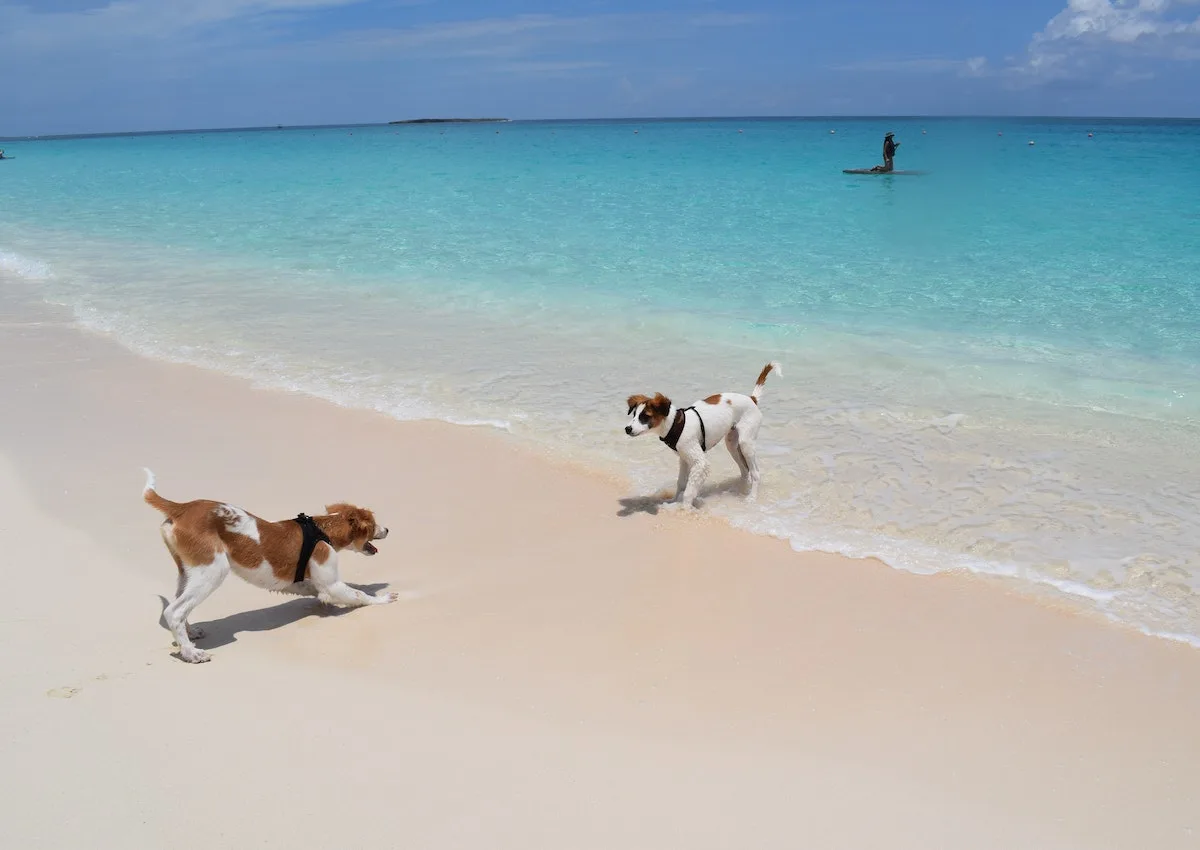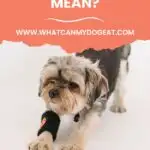If you’ve ever watched dogs interact, you’ve likely witnessed the charming and iconic play bow. A recent video of a dog play bowing while watching the Lion King has garnered attention to this expression.
This classic canine move is more than just a simple stretch; it’s a universal invitation to engage in joyful play. This article will explore the play bow, its significance and what your furry friend is trying to communicate through this gesture.

This post may contain affiliate link(s). As an Amazon Associate, I earn from qualifying purchases.
Breaking down the play bow
The play bow is a dynamic and unmistakable posture that combines elements of stretching and crouching. Picture your dog with their front legs extended, hindquarters up in the air and tail wagging enthusiastically.
This position, with its unmistakable mix of energy and excitement, is an invitation to engage in a game or playtime.
The language of play
Dogs have a rich and complex language of their own and the play bow is a prime example of their ability to communicate without words.
When a dog initiates a play bow, they’re signaling their intention to interact in a friendly and lighthearted manner. It’s a way for them to say, “Hey, let’s have some fun together!”
An article in Science Direct cited a study done by Bekoff (1995) which found that play bows function as behavioral modifiers to help clarify playful intent before or after easily misinterpretable behaviors, such as bite-shakes.
If you’ve ever witnessed two dogs playing with each other, this is easily seen. Oftentimes after a dog will play bite another dog, they’ll immediately go into the play bow position as if to signify “hey, it’s cool, I’m just playing.”

Communication and trust
Engaging in play is about more than just physical activity; it’s a way for dogs to bond and build relationships. The play bow fosters a sense of trust and cooperation between dogs and between dogs and humans.
By reciprocating the play bow, you’re acknowledging your dog’s invitation to play which strengthens your connection.
In chapter two of one of my favorite dog behavior books, Dogspeak a wonderful display of visual body language cues that your companion can display are written out and described in detail including the play bow.
Different types of play bows
Just as every dog has a unique personality, the play bow can also come in different variations. Some dogs may perform a subtle and quick play bow, while others might hold the position longer, emphasizing their enthusiasm.
Learning to recognize these variations can help you better understand your dog’s mood and intentions.
- The Classic Play Bow: The standard play bow, with front legs extended and rear end up, is an all-out invitation to play.
- The Subtle Play Bow: Some dogs may perform a more discreet version of the play bow, keeping their hindquarters closer to the ground. This can signal a slightly cautious approach to play or indicate playfulness in a more subdued manner. They may even display a side-eye glance while doing it.

Encouraging playfulness
Responding to your dog’s play bow with enthusiasm and playfulness of your own can be incredibly rewarding. Engaging in games like fetch, tug-of-war or simply running around together can provide mental stimulation and physical exercise for your furry companion.
So what is your dog thinking?
The play bow is a heartwarming expression of your dog’s innate joy and eagerness to connect. By recognizing and reciprocating this invitation, you’ll create memorable moments of shared happiness and strengthen your bond.
So, the next time your furry friend strikes a playful pose, don’t hesitate to join in the fun and embrace the language of play that transcends species.


Fur-tastic fluffballs: 7 fantastically fluffy dog breeds
Wednesday 11th of October 2023
[…] a teddy bear or goofy couch potato, big fluffy breeds can also have surprising bursts of energy and playfulness. While they might enjoy lounging around with you, these dogs also need their fair share of exercise […]